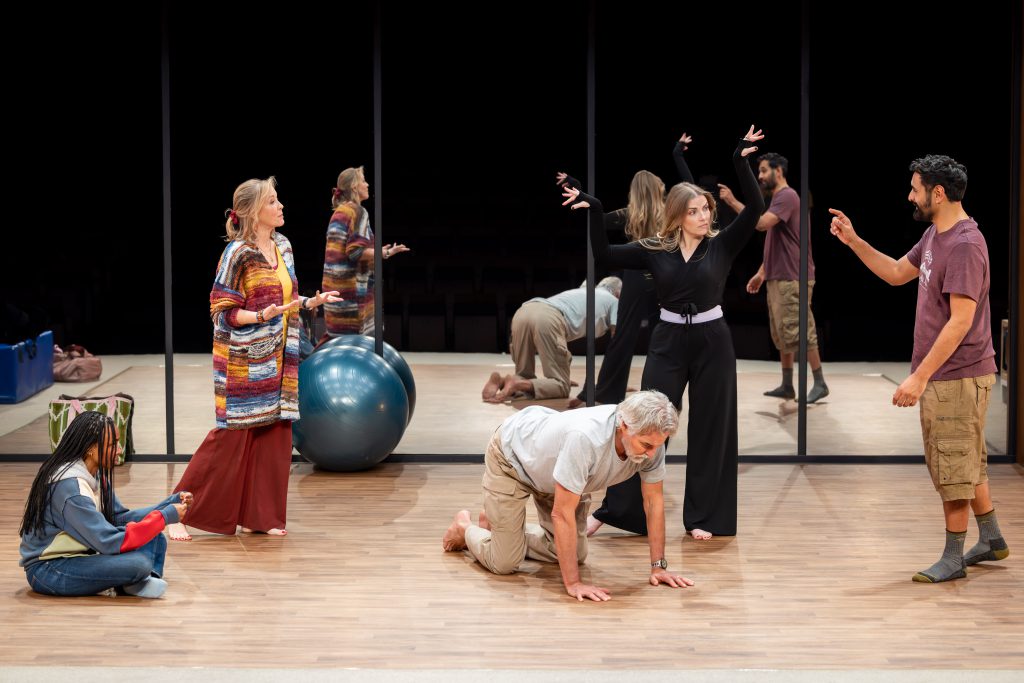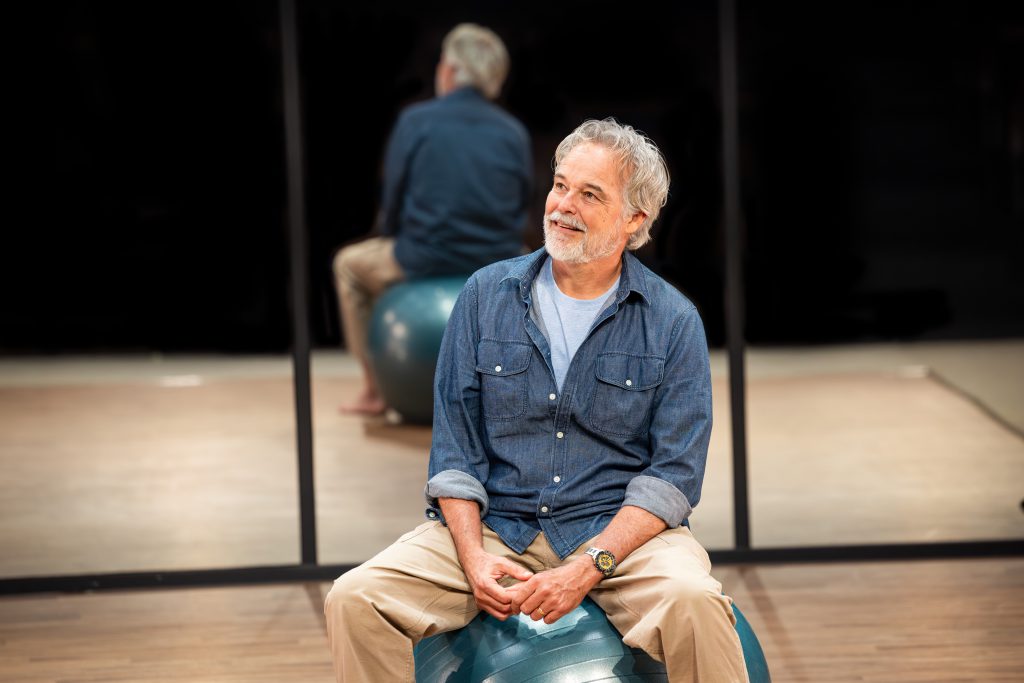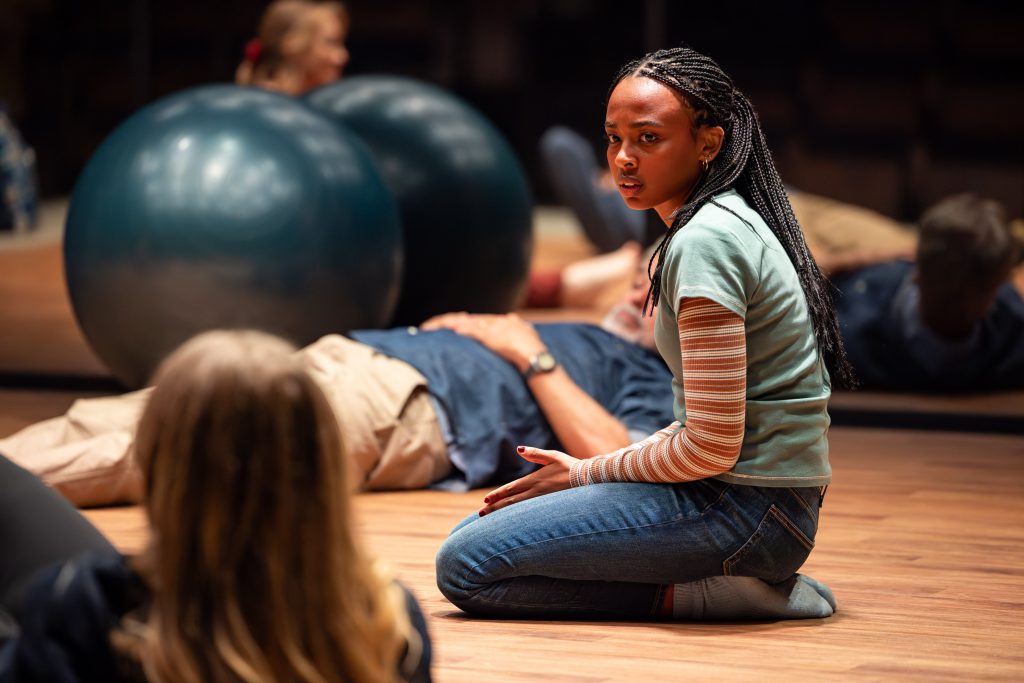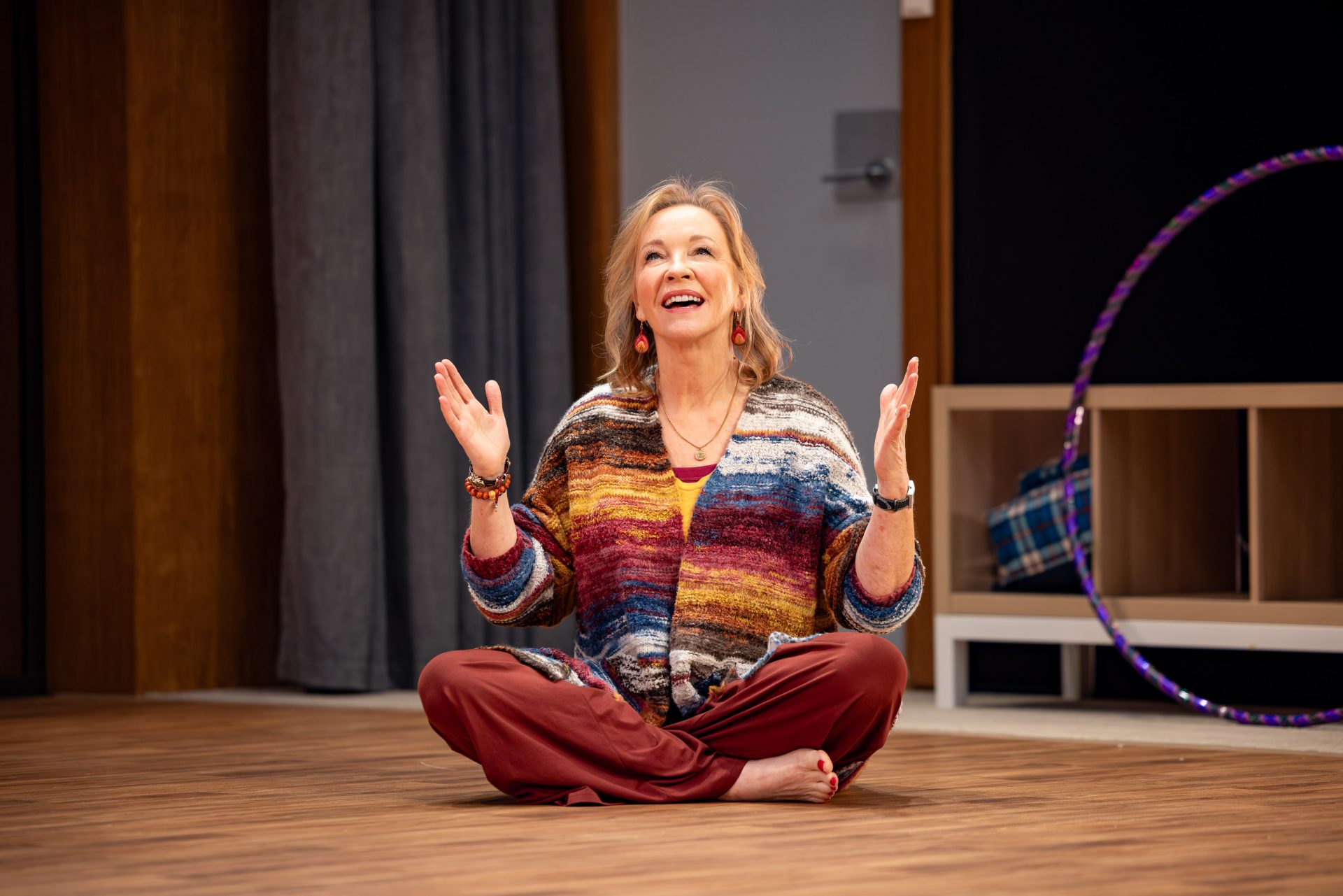What happens in a community acting class? A lot more than just acting.
Circle Mirror Transformation, produced by Sydney Theatre Company, displays the turbulence of five characters’ life experiences from the confines of a bare-bones acting studio. Intending to convey the importance of small moments, silence and coming together, the show offers audiences more the longer they remain invested in it – if they can manage to remain invested.

Circle Mirror Transformation focuses on the lives of acting teacher Marty (Rebecca Gibney), her husband James (Cameron Daddo), carpenter Schultz (Nicholas Brown), actress Theresa (Jessie Lawrence) and high schooler Lauren (Ahunim Abebe). Marty is leading an adult creative drama class in Vermont, with the remaining quartet her students. After an awkward first week, the webs of each character’s lives begin to coalesce in a comic, confusing, and chaotic sequence of arguments, affairs, and hard truths.
The ensemble give an immensely strong performance. Their natural, genuine chemistry lets them nail the ebbs and flows of an acting class; the initial stiffness towards each other, the subsequent opening up, and the sad goodbyes that come from an extended period engaging physically, mentally and emotionally. Their successful group dynamic comes from each individual’s understanding of their character. Brown, Daddo and Gibney are particularly successful. Brown’s portrayal of Schultz as an emotionally fragile divorcee in the throes of a mid-life crisis is thoroughly entertaining. Daddo delightfully reveals James’ faults while maintaining his friendly veneer, and Marty’s undulating control over her students and her emotions is engagingly captured by Gibney.

Technical elements and direction elevate the on stage performance. Jeremy Allen‘s set is deceptively simple. Its inclusion of a large mirror invites introspection and enhanced concentration, and lets the audience witness little movements and interactions which would otherwise be missed. Clemence Williams‘ sound design that plays between scenes, largely composed of breath work one might hear from actors warming up, adds timing to the performance. Direction from Dean Bryant ties all of these together well to represent what playwright Annie Baker intended audiences to grasp.

Despite these successes, the production is limited by the slowness of its script. Baker is known for writing plays that feature numerous extended silences, passive sequences, and general moments of inaction. These are justified as requiring audiences to pay closer attention. In Circle Mirror Transformation, the reward for such attention arrives later than it could. Whether it is also worth it is subjective. Such issues reduce the show’s impact, an unfortunate misstep given its strong execution.
Ultimately, Circle Mirror Transformation presents what can happen when strangers open up their lives to one other. The results, though not always glamorous, bring about changes in perspective and sense of self. This production displays these takeaways well, but is subject to a script that inhibits their resonance.
